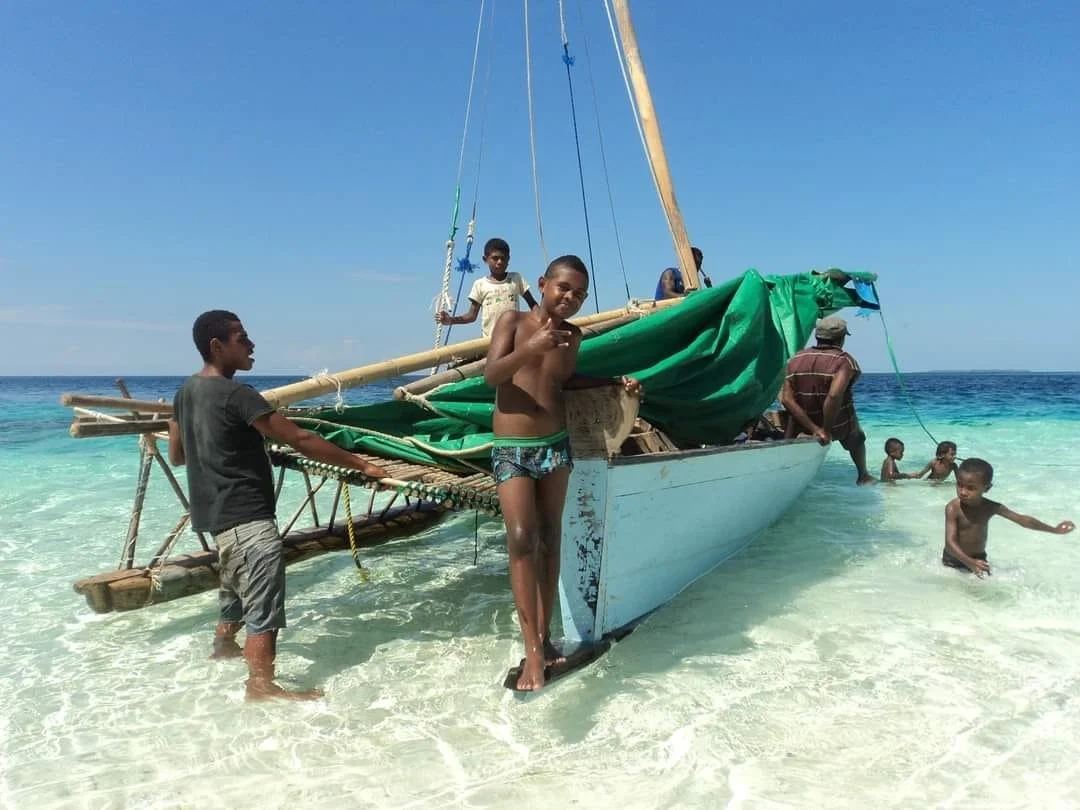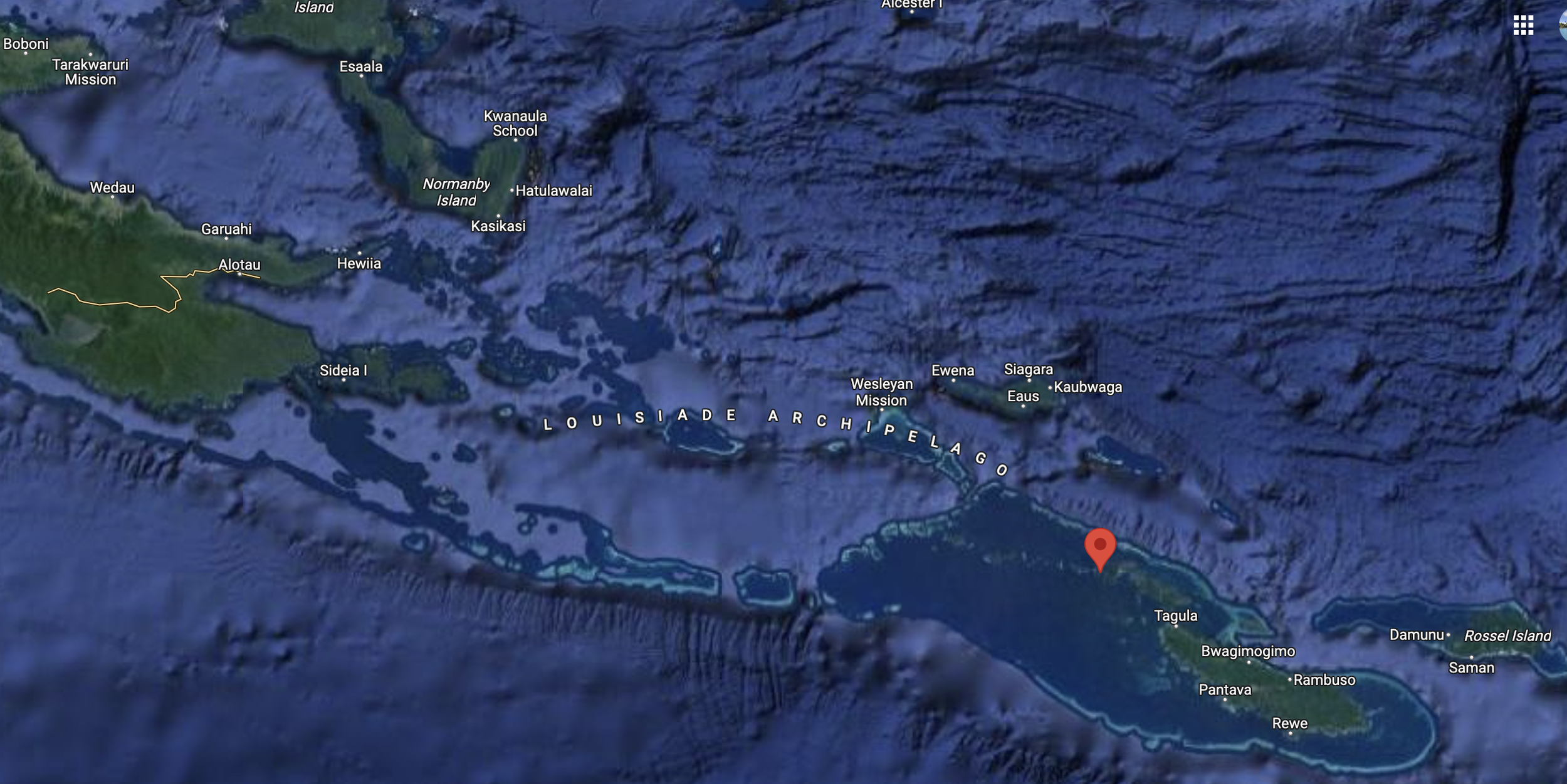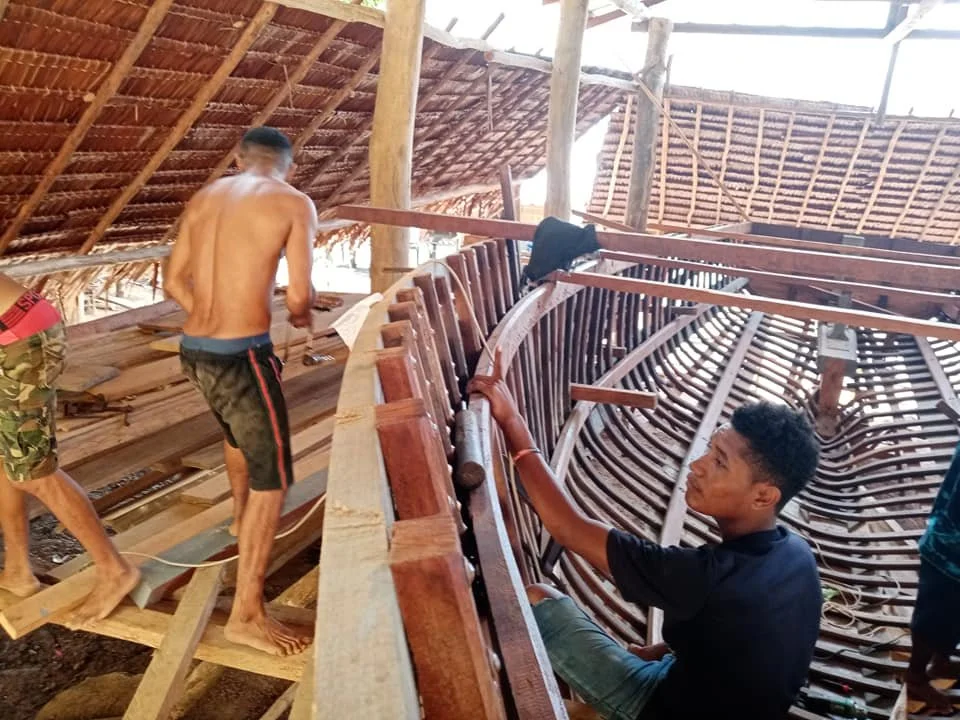Maiwar Has Been Found
“…it’s currently on a little island called Panawina.”
“It was found by the islanders of Panawina. They pulled it a shore and currently it's there. Panawina is located in the Calvados Chain of islands in the Milne Bay Province in Papua New Guinea.”
Greetings all,
Obviously, there is some big news but, before we go any further, I’d like to share a few thoughts regarding my reintegration to society, as it has been a while since you last heard from me. Otherwise, you can scroll down to the exciting stuff.
My first few weeks back in civilisation were a strange blur. Unbeknown to me, the adrenalin was still pumping from the journey, everything was new and exciting again, and it would take some time before the full repercussions of my return would be felt. For a short while there I was revelling in my situation and soaking up the pleasures of the material world. But, as I knew would happen, it soon wore off; the days melted away, the phone stopped ringing, and things that were, for so long, extreme pleasures that I could only dream of, became everyday needs. Life was returning to normal and I was struggling to cope.
Do we not, in this modern age, strive to live ‘in the moment’, to take each and every minute of the day as is comes, to not wallow in the past, or fancy the future, but to follow the philosophy of living in the present? Thoreau, writing in the 1850’s, revealed he was “anxious to improve the nick of time…to stand on the meeting of two eternities, the past and future, which is precisely the present moment; to toe that line.”
Unfortunately, I’ve never been very good at toeing that line. Instead, I spend much of my time luxuriating in the past and dreaming of the future, while the present pleasantly slips by. For months on end at sea I would be stimulated by either extremity, this was my greatest strength. The past was relived constantly, refined and romanticized, distilled to its purest and most intoxicating form. From this concoction I would sip pleasantly, letting the day slip by while the highlights of my life ran as a film in my mind.
And for a change, I would swing the other way, leave the past behind, overtake the present, and sojourn in the future. Hours on end would melt away while thinking of what the future held, the adventures on land and sea yet to come. No matter how hard things were, I knew I could look forward to and dream of, better times ahead. With so much certainty I planned my future, how it would look and feel down to the minutest detail, and what a pleasure that was.
This is a craft I have honed over my childhood. From my early teenage years I always had a spare arrow in my quiver, the Pacific Ocean. No matter how hard things were, I could always steal away to the future, to the time when I would be rowing the Pacific, alone and unreliant, freed from the ills of the world around me.
One and a half years ago I pulled back the bowstring and shot my finest arrow. Oh my, how it soared, further than the rest, ever higher, with a feeling that that it may never come down, that perhaps the laws of gravity didn’t apply to this arrow, that my whole existence could be pinned to this one shot that seemed never to waver. It was absolute.
At fourteen years of age, unlike my contemporaries, I knew exactly how my next ten years would look, and I made sure it happened. I missed out on the little crises of young adulthood, of approaching the unknown. I was always so surefooted, the unbridled ambition was there, along with the dedication, anything was possible. Dreams do come true.
Realistically, all good things must come to an end, the arrow must fall to the ground. What I’m left with now is an empty quiver. I look out into the world and see no answers. After a long and treacherous journey, I find myself standing before a great abyss, my toes are curled over the edge of a great unknown. For the first time in my life, I know not what the future holds. The abyss is finite, I realise that, but there is no clear path, nothing materialises, just brief apparitions of light. And how can one see clearly when surrounded by two and a half million people? Going from a world that consisted of just one, for so long, to a bustling metropolis with a concrete fetish.
I sit outside, al fresco, watching the cars speed by as I eat my dinner and meditate on my surroundings. A black crow swoops and dives amongst the traffic, picking its moments to feast on some unidentifiable roadkill, probably a possum, maybe a large rat. What mean and sneaking lives these city crows live, feasting on the remains of the less fortunate while eking out their own tepid existence.
After dinner I wandered on home, feeling happy that I had a new friend in the crow. Perhaps he too has seen the best of his world, has soared high and far, travelled to the ends of his earth, and returned to the big smoke for some crow business. I should have asked.
But I had to keep moving, the sun had set on the last day of 2023, and it was time to get ready for the obligatory annual celebrations. Five tons of fireworks had been loaded onto rafts on the Brisbane River, and a friend’s boat was moored strategically to make the most of the night.
After an evening of drinks and nibbles, small talk, and tales from the high seas with fellow mariners, the night was soon to reach its climax as the year came to an end. Tens of thousands lined the riverbanks and the bridges.
With less than fifteen minutes until the new year was to be heralded in with a spectacular display of pyrotechnics, I felt my phone buzz. I reached my hand into my pocket, pulled out my mobile and read the following message:
“Hello. I have information on Maiwar your boat. Please text me as soon as you see this message.”
In disbelief I replied, asking to know more.
The next morning, I received this reply:
“Your boat was found in the Calvados Chain of islands, its currently on a little island called Panawina located in the in Milne Bay Province, Papua New Guinea”
“It was found by the islanders of Panawina. They pulled it a shore and currently it's there. Panawina is located in the Calvados Chain of islands in the Milne Bay Province in Papua New Guinea.”
I could not believe my luck! Ten days earlier I had a small glimmer of hope that Maiwar had landed on an isolated island, but this was solid evidence!
Later that morning I got a phone call from Cindy of Fergusson Island in Milne Bay, the same woman who had sent me the Facebook message. She went on to explain, in very polite English, that Maiwar had washed ashore on Panawina, the island where her brother and mother live. She assured me that Maiwar was safe on the beach of her mother’s house. She did not know Maiwar’s condition, but told me that her brother climbs the mountain once a week to get phone reception and call his sister. She would let me know Maiwar’s condition as soon as possible. She explained that, after finding Maiwar, they went through her and found some documentation that led them to understand I was the owner. Thanks to social media, just over ten days after Maiwar washed ashore, they were able to track me down and make contact.
As one can imagine, my mind has been racing for the past 48 hours, with the big question being:
What’s next?
Well, first of all, we need to know something about Panawina Island and her inhabitants.
Panawina, a volcanic island with an elevation of 945 feet, lies approximately 140 nautical miles east-southeast of the easternmost point of the main Island of New Guinea. It comprises 30 square kilometres of land, and is home to approximately 300 people, who, from my understanding, live without electricity.
Panawina and the surrounding islands are serviced by numerous small wooden trading boats that ply the waters of the Milne Bay Region. Transport in these areas is by cargo boat, dinghy or sailing canoe.
The people of Milne Bay are famous for their good nature, as well as the fascinating ‘Kula Ring’ exchange system that still prevails today. This means that it will be no casual, or even easy affair to regain ownership of Maiwar, strict formalities will need to be observed to ensure I maintain decorum.
Panawina is not serviced directly by the cargo boats, instead they go to Tagula on Sudest Island, about 16 miles from Panawina.
The next big question is: How on earth I’m going to get there?
A plan has been formulated.
I will fly to Port Moresby from Brisbane, then to Alotau in Milne Bay. From Alotau I will go to the wharves and jump on the next trading boat heading east, as a paying passenger. Along with me will be pictures and charts to tell my story to the people of Panawina, as well as an assortment of gifts. A few days later I will arrive in Tagula where, I’m told, I will be able to hitch a ride in a dinghy or sailing canoe to Panawina.
Once on Panawina the formalities will begin, what they are I simply cannot say, but hopefully it all goes smoothly. The other great unknown is Maiwar’s condition. Will she be holed, will she still have a rudder, or oars? I’ll just have to wait and see. It will then be a case of getting her ready for sea once more and finding the nearest trading boat that can tow her back to Milne Bay, at least a two-day journey.
And then…
Well, then she will stay in Milne Bay until it can be decided if, when or how Maiwar gets back to Australia. It will of course be a costly exercise to bring her back home, as the only practical way to bring her back to Brisbane will be in a container. For now, the main goal is to get her back to Milne Bay.
At this stage there are still so many unknowns, but it seems very likely that I will be on a plane to PNG in the next week or so, then catching a ride in a sailing canoe to an isolated island to find my long lost Maiwar.
What an adventure!
Stay tuned for more…
Photo courtesy of Saeya Wooden Boat Builders






